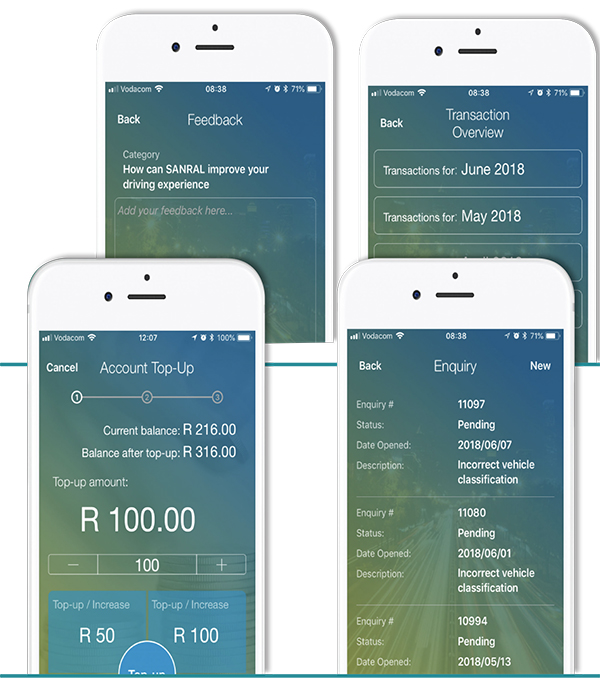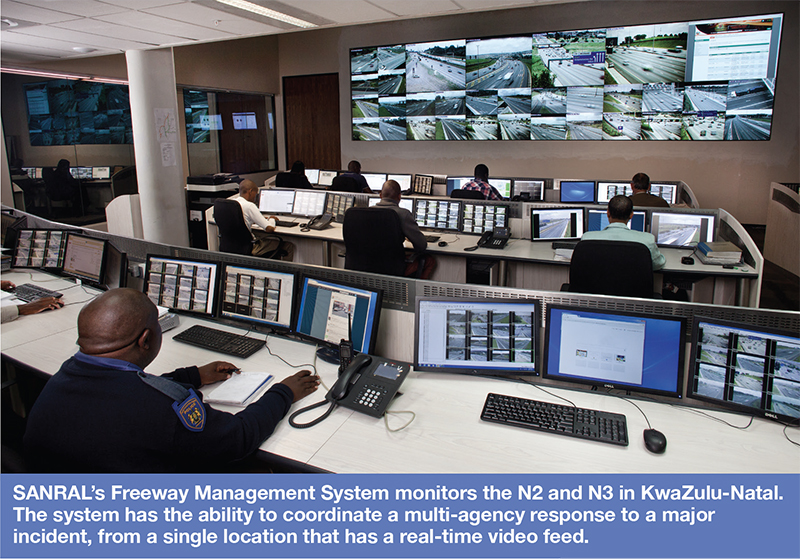Get going with SANRAL app

So you’ve checked your car, got all the snacks and in-car entertainment for the kids and you’re ready to hit the road for the weekend away. Two hours in and you’re still in good shape. Thanks to your tag, you’ve been cruising from toll gate to toll gate. But later, you pull up to the tag lane and… nothing happens. You’ve run out of money on your tag. Now you have to throw your car into reverse and issue a thousand apologies to all the irritable drivers behind you. You finally get to the manual toll gate when you realise you have no cash on you. What now?
The good news is that SANRAL has developed an app that allows for a realtime balance check and top-ups for when you’re on the go. Convenience is the name of the game here. You can make changes to your account profile and review your transactions. It’s available as a free download for all Android and iOS devices.

With the app, you’ll be able to top up and use your tag within 30 minutes at the next toll plaza. Travel shouldn’t be about admin.
It should be about enjoying the journey. Let the SANRAL app take care of the boring stuff so you can get going without any hitches.

Motorists using KwaZulu-Natal freeways can make smart decisions to remain safe and avoid congestion, thanks to the implementation of the Freeway Management System (FMS).
The system relays real-time information to alert motorists about incidents that are unsafe and most likely to cause a build-up of traffic and subsequent delays.
Nkabinde Dumisani, SANRAL’s Eastern Region Manager, said: “A freeway can have six lanes, but a single incident such as a breakdown or collision can have a major impact on the flow of traffic in both directions.” The FMS consists of technologies and strategies to monitor, control, and manage freeway traffic more effectively.
SANRAL first started implementing the FMS on strategic sections of roads in KZN during 2009, following the successful pilot FMS on the Ben Schoeman Highway in Gauteng. The FMS entails the active
management of road networks using intelligent transport system (ITS) technologies. ITS involves the integrated deployment of communications tech, traffic management software and control devices such as closed-circuit television cameras (CCTV), as well as variable message signs (VMS) and traffic detectors, to enable the active management and monitoring of freeways. “The many benefits to the road user on such a managed network include improved congestion management, faster detection, verification and response to road incidents (such as collisions, obstructions and hazards) and provision of real-time travel information to road users. “This directly results in safer roads, saving of travel times and fuel costs, as well as contributing to a cleaner environment,” Nkabinde said. The KZN FMS covers about 120km of the busiest sections of the N2 and N3, from the Prospecton interchange
Freeway Management System alerts about trouble ahead
on the N2, northward to the Watson Highway interchange and the N3 from the Candella Road bridge to Market Road. Further expansions are planned – from Market Road to the Cedara interchange, which includes the highaccident zone at Town Hill.
These highway sections are equipped with 147 CCTV cameras, 26 VMS units and 57 radar vehicle detection units, all linked through a fibre-optic communications backbone to a Traffic Management Centre (TMC) located at the SANRAL offices in Pietermaritzburg.
Nkabinde said the incident detection and verification of times in KZN were impressive, with the average detection time down to 76 seconds. “This is in large part accomplished by an efficient TMC operations team and an effective performance monitoring regime. The TMC works closely with and provides real-time traffic and accident information to the various authorities involved in road incident management, such as police and emergency services.
“To further improve the response to traffic incidents, officers from KZN provincial police are currently colocated at the TMC,” he said.
The SANRAL TMC operates on a 24/7 basis and has 23 staff involved in road network monitoring and incident management.
It deals with an average of 800 trafficrelated incidents every month. Stationary vehicles on the network (mostly heavy motor vehicles) account for just over half of all the traffic incidents detected.
Approximately 17% of the total trafficrelated incidents are crashes – which equates to an average of 140 accidents per month. Most of these accidents (more than 70%) involve light motor vehicles, either in single or multiple vehicle collisions. The freeway sections around the EB Cloete systems interchange (spaghetti junction) and the Umgeni interchange on the N2 record the highest number of incidents.
Traveller information website www.i-traffic.co.za is also available to the public and provides useful information such as traffic conditions, roadworks, road conditions, congestion and traffic alert information. Users can also register on the site and subscribe for free SMSs and email traffic alerts. There is also real-time viewing of the various camera feeds along the routes. Traffic information is posted via social media such as Twitter via the @i_trafficKZN account, which boasts 175 000 followers at the time of writing.
 Building South Africa through better roads
Building South Africa through better roads